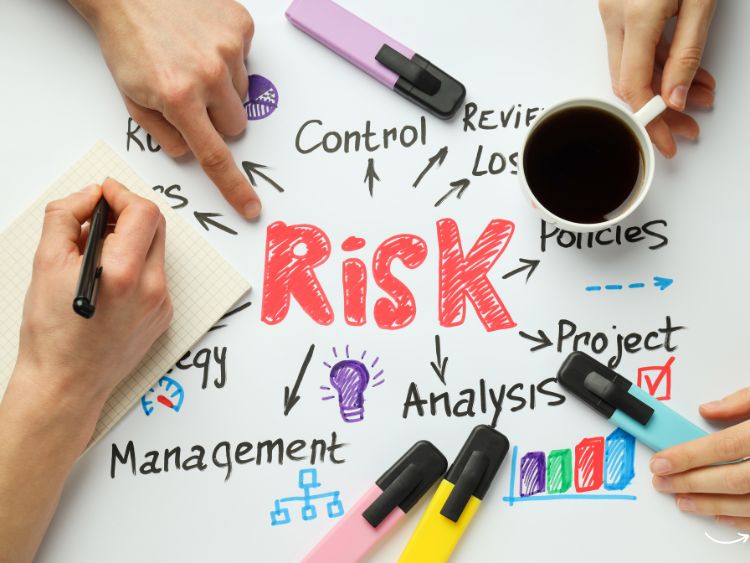In the world of business, contracts are the backbone of any professional relationship. Whether you’re a small business owner or a corporate giant, the agreements you enter into can make or break your success. That’s where contract risk management comes into play. But what exactly is it? And how can you effectively manage risks in your contracts? In this comprehensive guide, we’ll dive into the nuances of contract risk management, providing you with practical insights and strategies to protect your business interests.
What is Contract Risk Management?
Contract risk management is the process of identifying, assessing, and mitigating risks associated with contractual agreements. It involves analyzing potential issues that could arise during the execution of a contract and taking steps to prevent or minimize their impact. This practice is essential for safeguarding your business from legal disputes, financial losses, and reputational damage.
The Importance of Contract Risk Management
In today’s fast-paced business environment, the stakes are high. Contracts form the foundation of your dealings with clients, suppliers, partners, and employees. Without proper risk management, you could find yourself in a precarious situation. Here’s why contract risk management is crucial:
- Protects Against Legal Issues: Properly managing contract risks helps you avoid legal disputes and ensures compliance with relevant laws and regulations.
- Financial Stability: By identifying potential risks early, you can mitigate financial losses and safeguard your company’s bottom line.
- Maintains Reputation: Effective risk management helps you uphold your company’s reputation by ensuring that all contractual obligations are met without hiccups.
- Builds Trust: Clients and partners are more likely to trust and continue doing business with a company that demonstrates a strong commitment to managing risks.
Key Components of Contract Risk Management
To effectively manage contract risks, you need to focus on several key components:
1. Risk Identification
The first step in contract risk management is identifying potential risks. This involves thoroughly reviewing the contract and considering various factors that could pose a threat. Common risks include:
- Ambiguous terms and conditions
- Unclear deliverables or performance standards
- Potential breaches of contract
- Regulatory compliance issues
- Financial instability of the contracting parties
2. Risk Assessment
Once you’ve identified potential risks, the next step is to assess their likelihood and impact. This involves evaluating how probable it is that a risk will occur and the severity of its consequences. Risk assessment helps prioritize which risks need immediate attention and which can be monitored over time.
3. Risk Mitigation
After assessing the risks, it’s time to develop strategies to mitigate them. This can include:
- Clarifying contract terms and conditions
- Establishing clear performance metrics and deliverables
- Including indemnity clauses to protect against breaches
- Ensuring compliance with relevant laws and regulations
- Conducting due diligence on the contracting parties
4. Monitoring and Review
Risk management doesn’t end once the contract is signed. Continuous monitoring and periodic reviews are essential to ensure that risks are being managed effectively throughout the contract’s lifecycle. This can involve regular check-ins, audits, and updates to the risk management plan as necessary.
Best Practices for Contract Risk Management
Implementing effective contract risk management requires a strategic approach. Here are some best practices to help you get started:
1. Use Standardized Contracts
Whenever possible, use standardized contract templates that have been reviewed by legal experts. This reduces the chances of including ambiguous or risky clauses.
2. Involve Legal Experts
Having legal experts review your contracts can help identify potential risks that you might overlook. Their expertise ensures that your contracts are legally sound and protect your interests.
3. Establish Clear Communication Channels
Clear communication with all parties involved in the contract is essential. Make sure everyone understands their roles, responsibilities, and expectations. This helps prevent misunderstandings and potential disputes.
4. Document Everything
Maintain thorough documentation of all contract-related activities, including communications, negotiations, and any changes made to the contract. This provides a clear record in case of any disputes or issues.
5. Regular Training
Ensure that your team is well-versed in contract risk management practices. Regular training sessions can help keep everyone updated on the latest best practices and legal requirements.
FAQs about Contract Risk Management
What are the common types of contract risks?
Common contract risks include ambiguity in terms and conditions, unclear performance metrics, potential breaches, regulatory compliance issues, and financial instability of the parties involved.
How can I identify risks in a contract?
To identify risks, thoroughly review the contract, consider all potential scenarios, consult legal experts, and conduct due diligence on the contracting parties.
What should I include in a risk management plan?
A risk management plan should include identified risks, their likelihood and impact, mitigation strategies, monitoring procedures, and a review schedule.
How often should I review my contracts for risks?
Regular reviews are essential. Depending on the contract’s nature, quarterly or bi-annual reviews may be appropriate. Always review contracts before significant milestones or changes.
Can technology help with contract risk management?
Yes, contract management software can streamline the process by automating risk identification, tracking changes, and ensuring compliance with legal standards.
Summary
Contract risk management is a vital practice for any business that enters into contractual agreements. By identifying, assessing, and mitigating risks, you can protect your company from legal disputes, financial losses, and reputational damage. Implementing best practices such as using standardized contracts, involving legal experts, establishing clear communication channels, documenting everything, and providing regular training can significantly enhance your risk management efforts. Remember, effective contract risk management not only safeguards your business but also builds trust with clients and partners, ensuring long-term success.



